“Here is a new idea to add weight to light boxcars etc.
I used cut up pieces of old n gauge track rails the length of the car and glued them to the inside base of the truck carriage flat for weight and then snapped the body back on.
Add as much as you need and it has a low center of gravity.
Ed”
“When gluing pieces of foam to each other I use the least expensive linoleum or carpet glue that I can find.
I full spread the glue using a 1/16”x 1/16” square notch trowel.
By full spreading the glue, you eliminate most of the gaps between the pieces of foam.
Also, the dried linoleum glue is soft and readily sands off, which eliminates most of the glue lines between the pieces of glued foam.
You still have to put some weight on the foam overnight ( 24 hours )while the glue dries. While the glue is still wet, it cleans up with warm soapy water.
For small areas, a caulking gun applied glue works fine, but if you are making a lot of mountains and stacking a lot of foam, the linoleum glue comes into it’s own.
It is fairly inexpensive and solves some common problems when gluing foam.
Randy”
“I use old pill bottles and cake frosting which is plastic for oil tanks, grain storage tanks and I also use my wife’s plastic canvas for ladders and walk ways on the storage tanks, they look like they are scale and all you have to do is glue them on. I also use my extra matt board for buildings, you can buy a 30″ x 40″ sheet for around $6.00.
James”
“Hello Al,
In between my other projects I decided to build an oil refinery.
It will fill a space in the back of my layout about 6 feet long and about 10 inches wide.
I’m using a lot of plastic straws for pipe, PVC pipe for storage tanks as well as cans and jars.
I built some shut-off valves from metal grommets with small buttons for wheels.
I use 1/4 x 1/4 metal screen (for O scale) to build my ladders as well as guard fencing. I glue the screen to wooden skewer sticks to make the ladders.
The picture of the single piece of screen came out blurry but I hope the idea is obvious.
I have completed my first sub-assembly and thought it might contain some ideas that may be of use to the group.
Bob”
That’s all for today folks.
Please do keep ’em coming.
And if today is the day you grab the bull by the horns, the Beginner’s Guide is here.
Best
Al
PS Latest ebay cheat sheet is here.


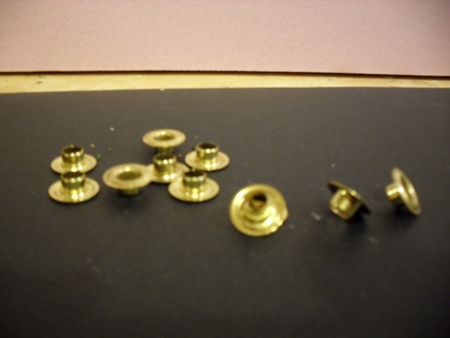
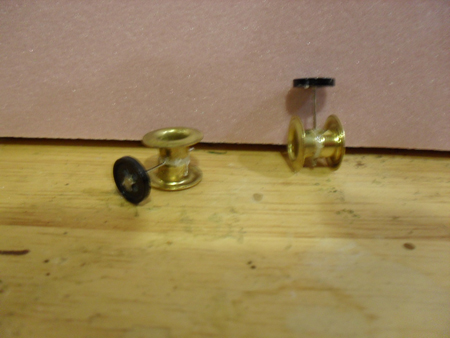

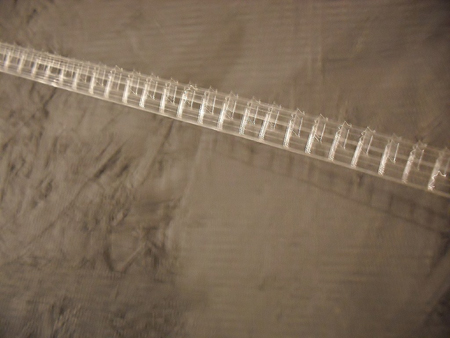
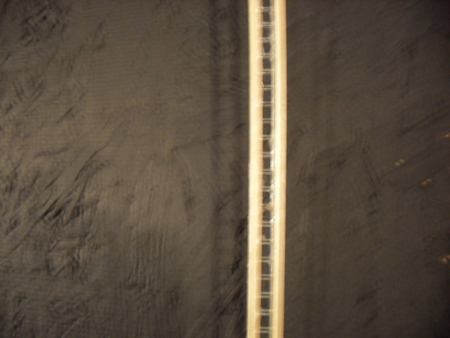
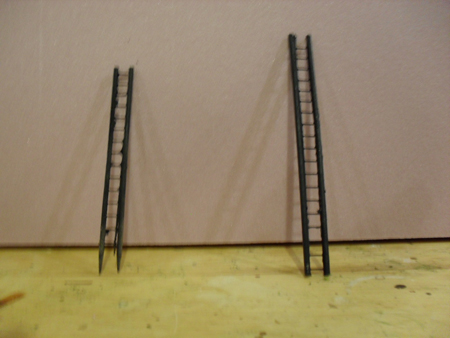
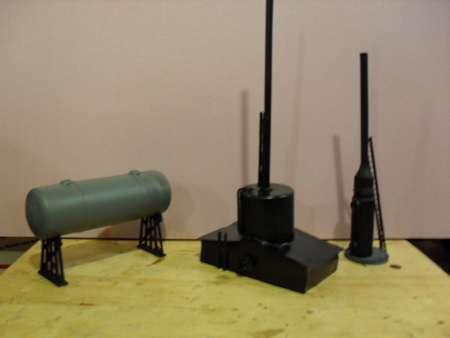

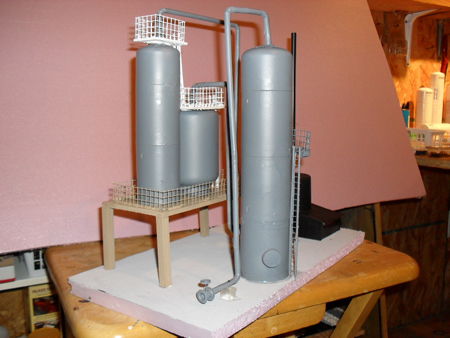

What is the size of pipe
well done very clever
Very good indeed.
Hello. I’ve been reading the posts here for a while and really enjoy seeing the pics, layouts and tips you guys post. I thought it about time I post in to give kudos. FANTASTIC!
The tip on weighting boxcars reminded me of something similar I used to do. This was back in the late 1960’s when I was still a kid, between the ages of 10 to 16. My best friend and I combined our HO gear on a 15′ by 12′ L table my grandfather had built for us in my basement. Even though he loved the B&O, and I was a staunch Santa Fe aficionado, we combined our stuff. Between the two of us, one of us was always getting a new building or something from time to time, so for kids, this was great for having more that you could get individually.
Even though we aspired to making a layout like the ones pictured in Model Railroader magazine, ours was more of a constant work in progress. We spent hours re-laying our Flexi-track to change the design, re-locate the yard, terminal, etc. Back then the only way to run two engines off our multiple transformers was gapping. That was the fun.
We were sticklers for detail. We hated molded-on handrails and spent countless hours using a Dremel tool to sand them off and replace them with wire. No internet back then, so the Hobby Store was the only source — or send away through the mail to get those hard to find parts like steam engine interior cab details. Couplers were the generic z-clip style, so back to the mail to get the knuckle type that were more realistic. I’m glad to see those are standard now. When our allowance was used up, we would make due with cutting up the thin cardboard that the kits were boxed in when the balsa sheets ran low. But we always did it to scale using a ruler made with the HO foot measures.
A lot of our boxcars had doors that slid open. If the car had doors molded closed adding weight was no problem, popping the chassis off and replacing. For opening doors, we used fishing weights. Particularly, the smaller ones with a crease that were meant to be attached to the line by squeezing them on with a pliers. They’re made in various weights so they’re great for for mixing and matching to get the desired result. Once we figured out how much weight was needed, we would use a dab of bathroom caulk to stick them to the boxcar floor directly centered over the wheel trucks, balancing equal weight on both ends. Then using various crates (We used the ones you can buy to add to your scene just like buying more people figures and such) we glued them stacked in front of the weights to hide them. The trick is to use a Dremel to cut the boxes in half. That way you can construct a facade of boxes for both ends without buying a lot of scenic crates. Now the car is properly weighted, and while in the yard with the doors open, it’s a car with visible goods to be off-loaded. Close the doors and send it down the line to it’s next destination.
PS… I’m 56. Every so often I’ll go up in the attic, open a box with my old trains, and think.. D*mn, my detailing wasn’t too bad when I was kid. We have two boys, one hitting high school and the other still at home while going to college. I’m sure my wife is worried that when one moves out, she’s not getting that sewing room. LOL.
Thanks for letting me ramble. Ben
Bob, That is amazing. You have a gift for using your imagination and utilising ordinary items to create what you need for your hobby. It must be very satisfying to achieve the wonderful results that we see here on the screen. Well done. You have certainly shown us that anything is possible if you apply yourself. Very inspirational. Keep up the good work.
Well done Bob thanks for sharing
To Ed, Randy, James thank you for the great tips … very useful
Ben, I like the way you ramble … reminds me of me … almost a mirror image
Thanks Al for sharing
Best,
Tom N
So that is how you make an oil refinery.
I always wondered.
GREAT JOB AND AWESOME TIPS TO SAVE MONEY .
Hi ALL.
I read a post about 4-years ago regarding weighting wagons so I am passing it along. Evidently the ideal weight for wagons in HO scale is 60 grams and weighting is best done by winding a short wire around the bogie under the wagon which places the added weight directly over the trucks rather than the wagon itself. Something to do with placing weights at lowest point and it can be removed quite easily without harming the wagon itself. Sounds good to me !
THAT LOOKS LIKE PLASTIC WATER PIPE. VERY GOOD IDEA.
Wow that’s a nice looking oil refinery.Very clever.Useing old rails to add weight is a great idea.I have one for you guys.After i did the flashing micro wave tower.I did a partly done hydro electric substation.with barbed wire and a rolling security gate.It’s not finished with but thought you all may want to see it.thanks for the tips.
Bob, one word, Awesome.
Being a pipe fitter by trade it looks super.
To see how using caps from spray paint as shown above rent the movie “The Flight of the Intruder”. When our heros are making their bomb run on Hanoi the fly over an oil refinery made this same way!
Hey Bob — very creative use of ordinary items easily attainable to build an outstanding looking oil refinery. And it seems easily replicated if working in a large scale like O.
My favorite tip for adding weight to box cars is to use large nuts glued over the truck. If the truck is screw-mounted from above, the screw is accessible through the nut. The cars run a bit better with the weights wide apart, the weight is kept low, and if glued with bathroom caulk, is easier to remove. I would recommend going to the hardware store and stock up with nuts in assorted weights. The recommended weight for HO rolling stock: 1 oz plus ½ oz per inch of car body length. Simply weigh the car and determine which nuts will work best.
Still in Training,
Carl in Kansas
Aloha and BRAVO for the amazing tips and pictures. I am 76 years old and have been modeling trains of many gauges for over 68 years. From the first Lional giant Pennsy GG-1, through years of HO until finally settling on N and all its glory. I rode the Coast Daylight round trip between Los Angeles Union Station to Oakland twice each summer, pulled by the venerable 4449 from the age of 6 till 13. Glorious….! For modeling, the Internet and especially Ebay expanded my reach all over the globe for the unique engines and stock that fit a particular era. I currently model the Great Northern, era 1950-56, and only the Cascade Division, so I can model Steam, Diesel, and the Big Electrics that pulled through the 8 mile long Cascade Tunnel. I want to say BRAVO to every single post, as there is so much imagination, skill and pure joy represented by your photos and writing. Never stop. Because I live in Hawaii, space is at an enormous premium, so I was forced to change my modeling from full running layouts to mini-Panoramas that can hang on a wall. It is a joy to see how much realistic detail you can pack into 4 feet long by 8 inches deep. I will post pictures soon. My heart is still full of joy, knowing that like minded individuals world wide are designing, creating and executing such incredible works of art that represent the full history of our countries. Remember, without rail, there would have never been the enormous Westward Ho of America, the glory of the Orient Express, the engineering mastery of the Japanese Bullet trains and the European explosion of high speed led by the magnificent TGV’s. Now if we can just keep our enthusiasm up so that some of the great history from all of our countries does not end up being cut up and melted in a foundry. In my minds eye…there is nothing that can compare with sitting in a real dining car, having a fabulous lunch, as the world goes by outside. Sharing that experience with our grandkids is almost as good as actually doing it again and again in different worlds. Pictures and modeling tips soon. For now…thank you all for your dreams, skills and amazing artistry.
The refinery looks GREAT!!!!! NICE job with the “straw” pipe work too! Very well thought out!
The PVC pipe “tanks” look GREAT too! (I’m going to be using that idea to make some specialized tank cars, in much the same way of use PVC pipe and such fitted and all to scale size (HO Scale) so…… NICELY done over all!
Outstanding use of every day throw away items.
It is interesting to note that for n gage the plastic stirring rods or tubes that are available at “McDonalds” hamburgers is a nice size for N scale piping in many places. They are black but are easily painted.
boy I really feel bewildered a lot of times looking at the layout pics ! I have some basic ideas and wants then I see stuff here I might want to include, { not copy }my own version ! I think that I should subscribe when my tiny brain stops buzzing !
Hello,
What a good idea I had not thought of but now I have new inspiration to make industry.
I’m a big fan of using things around the house and trying various products that are not obvious or we would not think to use, but actually do what we want better than possibly the more common choice.
My older brother was into plastic canvas and he was always telling me how it was to get and it’s true, but it’s neat stuff with other uses besides using it for it’s intended purpose.
Frank in Orlando
enjoy getting your notes about track lays out.
thank you, best wishes – Tim Cochran,
Carson City, Nevada
USA.
im impressed with these tips especially the valves